National Decongestion Summit: All Three Gov’t Branches Unite to Find Solutions to Jail and Prison Overcrowding
December 6, 2023
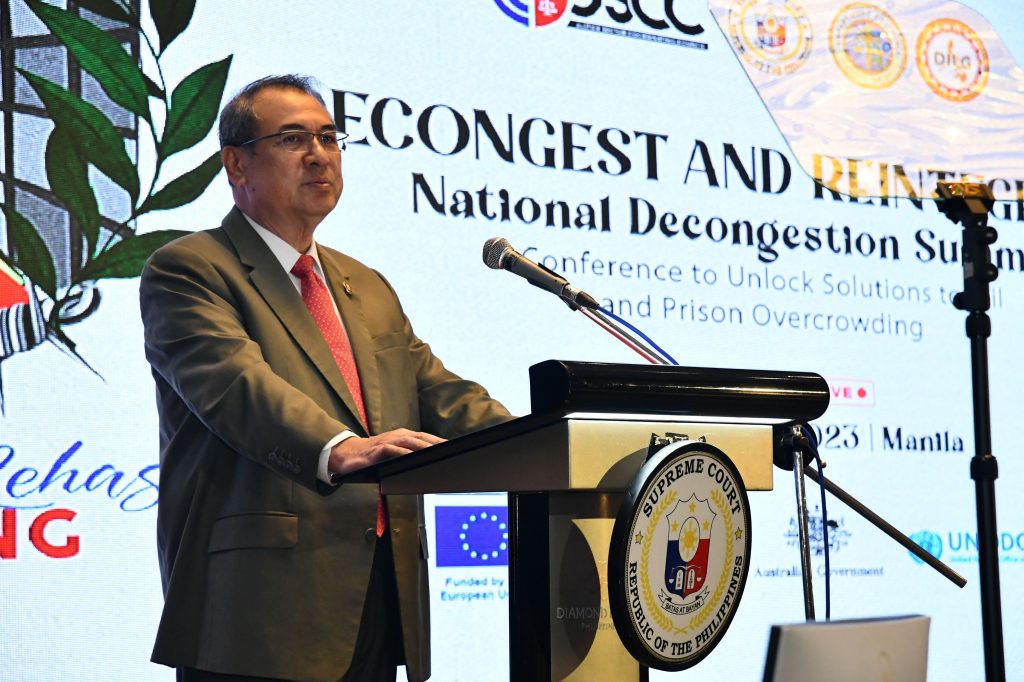
Addressing the guests and participants at the Justice Sector Coordinating Council’s National Decongestion Summit, Chief Justice Alexander G. Gesmundo says that through the Summit, the country is taking “a significant step towards ensuring better jail management, the humane safekeeping of PDLs, and the speedy delivery of responsive justice, especially for those whose lives and liberty depend upon it.” (Courtesy of the Supreme Court Public Information Office)
All three branches of the Philippine government—the Executive, the Legislative, and the Judiciary—united on Thursday, December 6, 2023, to unlock solutions to jail and prison overcrowding at the first of the two-day DECONGEST AND REINTEGRATE, National Decongestion Summit, A Conference to Unlock Solutions to Jail and Prison Overcrowding (National Decongestion Summit), spearheaded by the Justice Sector Coordinating Council (JSCC).
“Today is a historic day. On this day, the entire Philippine government, represented by no less than the Chief Executive of the Republic and the Heads of the Legislative and Judicial Departments, commits to an undertaking that will require the whole of government to execute, and that is, the decongestion of our penal facilities,” said Chief Justice Alexander G. Gesmundo, one of the three principals of the JSCC.
The JSCC, composed of the Supreme Court (SC), the Department of Justice (DOJ), and the Department of the Interior and Local Government (DILG) works on cross-cutting issues affecting the justice system while respecting and preserving the independence of the offices and agencies. The JSCC adopts a coordinated approach to justice sector policy making, planning, and operations; and well as identifies priority issues and challenges that may be collectively addressed.
Chief Justice Gesmundo stressed that the efficiency and efficacy of any criminal justice system is measured not by how many are prosecuted and incarcerated, but rather by how many are reformed and rehabilitated. He, however, admitted that the conditions of the country’s jails and detention facilities are not humane.
“Today we take a significant step together towards correcting this—towards ensuring better jail management, the humane safekeeping of PDLs [persons deprived of liberty], and the speedy delivery of responsive justice, especially for those whose lives and liberty depend upon it,” he stressed.
Chief Justice Gesmundo shared that 70% of detention facilities under the Bureau of Jail Management and Penology are overcrowded, at an average congestion rate of 386%. Even worse, the occupancy rate in some of our jails has gone as high as 2,748% of their standard capacity, he added. He said: “Without a corresponding expansion of our jail facilities, congestion would naturally result.”
Chief Justice Gesmundo said that the Summit “will go beyond mere talk and discussion” and stressed that that JSCC will already lay out its plan of action for addressing congestion.
He reaffirmed the JSCC’s full commitment in addressing the problem of congestion. “In all this, we emphasize: success in decongesting our jails depends on close cooperation, coordination, and collaboration across all the five pillars of the criminal justice system—including law enforcement, prosecution, the courts, corrections, and the community—and for that, we hope this Summit provides a strong and sustained platform,” stressed the Chief Justice. He added that this commitment is also in line with the Supreme Court’s ongoing pursuit of judicial reform under its Strategic Plan for Judicial Innovations 2022-2027, or the SPJI.
Messages of Support
Present during the Summit to give messages of support were Executive Secretary and retired Chief Justice Lucas P. Bersamin, who came on behalf of President Ferdinand Marcos, Jr.; Senate President Juan Miguel Zubiri; and House Speaker Ferdinand Martin Romualdez.
The President, through Executive Secretary Bersamin, commended the JSCC for holding the Summit, saying: “This gathering is most welcome, as it demonstrates the commitment of the entire government to expedite the processing of criminal cases and alleviate the chronic problem of jail congestion.”
For his part, Senate President Zubiri said that the Summit “is an important step in recognizing a basic but often overlooked truth: that fundamental human rights apply to every Filipino, including our PDLs—no matter the crime, no matter the sentence.”
House Speaker Romualdez remarked that it was crucial to recognize the dire situation of PDLs. He said: “Many languish in overcrowded jails, not due to the severity of their crimes, but because of prolonged processes and inadequate infrastructure. This reality calls for our immediate and decisive action.”
The two other JSCC principals — Department of Justice (DOJ) Secretary Jesus Crispin Remulla and Department of the Interior and Local Government (DILG) Secretary Benjamin Abalos, Jr. — were represented by DOJ Undersecretary Raul T. Vasquez and DILG Undersecretary DILG Usec Juan Victor R. Llamas, respectively.
DOJ Undersecretary Vasquez observed that the conference exemplifies the JSCC’s commitment to transformative change. “It will serve as a convergence point for policymakers, corrections practitioners, justice sector professionals, academics, and civil society representatives,” he added.
For the DILG, Undersecretary Llamas said that “(w)ith the support of the legislative branch of our government through our good Senate President and Speaker of the House of Representatives, we are confident that the much needed reforms will be legislated and that adequate funds to support these reforms be given.”
The following development partners of the JSCC also gave their respective messages of support: Mr. Daniele Marchesi, Country Manager, United Nations Office on Drugs and Crime Programme Office in the Philippines; H.E. HK Yu, PSM, Ambassador of Australia to the Philippines; and H.E. Luc Véron, Ambassador and Head of the European Union Delegation to the Philippines.
Workshop Proper
Senior Associate Justice Marvic M. V. F. Leonen was the featured at Workshop 1: Proposed Innovative Judicial Remedies for Decongestion and Monitoring Places of Detention.
Associate Justice Rodil V. Zalameda, on the other hand, was one of the reactors on the talk titled Addressing congestion through criminal justice reform in Brazil: important lessons from the Global South by Associate Judge Gabriel da Silveria Matos of the National Council of Justice, Brazil.
For her part, Associate Justice Maria Filomena D. Singh, Chairperson of the JSCC Technical Working Group on Processes and Capacity Building, presented to the participants the JSCC’s Jail Decongestion Concept Note.
The other workshops were: Community Engagement and Participatory Defense in California, United States of America; Decongestion Through Reading: The “Read your way out” Project; Digitalization, Data and Case Management Practices for Improved Efficiency in Criminal Justice; Case Processing Innovations and Speedy Disposition of Criminal Cases; Examining Decongestion Programs, Alternative Dispute Resolution and Potential Solutions for the Criminal Justice System; Challenges and Opportunities of Clinical Legal Education for Decongestion; and Decongestion Initiatives in the Justice Zones.
The JSCC also formally launched the official logo of the National Decongestion Summit, which was based on the winning entry of Dan Angelo Santos, a PDL at the Aklan District Jail. The logo, which shows the backs of a male and a female PDL walking towards an open gate with olive leaves, bears the words “Sa likod ng rehas, panibagong bukas.” (“Behind the bars, a new tomorrow.”)
The Summit was attended by over 300 key stakeholders, advocates, law enforcement officials, legal experts, and community leaders, among others, who discussed the challenges as they explored viable solutions to alleviate overcrowding in jails, among others. It is jointly supported by the European Union’s Justice Sector Reform Programme: Governance in Justice II (GOJUST) and the United Nations Office on Drugs and Crime (UNODC), with funding from the Australian Government and the European Union.
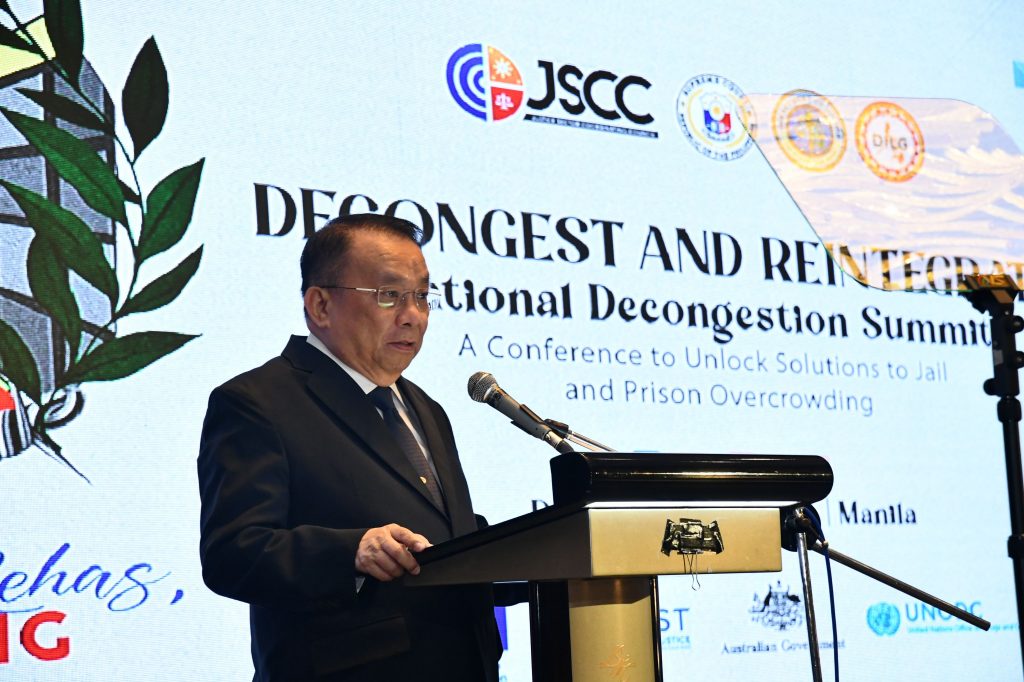
Executive Secretary Lucas P. Bersamin delivers the message of President Ferdinand Marcos, Jr., who commended the holding of the Summit: “This gathering is most welcome, as it demonstrates the commitment of the entire government to expedite the processing of criminal cases and alleviate the chronic problem of jail congestion.” (Courtesy of the Supreme Court Public Information Office)
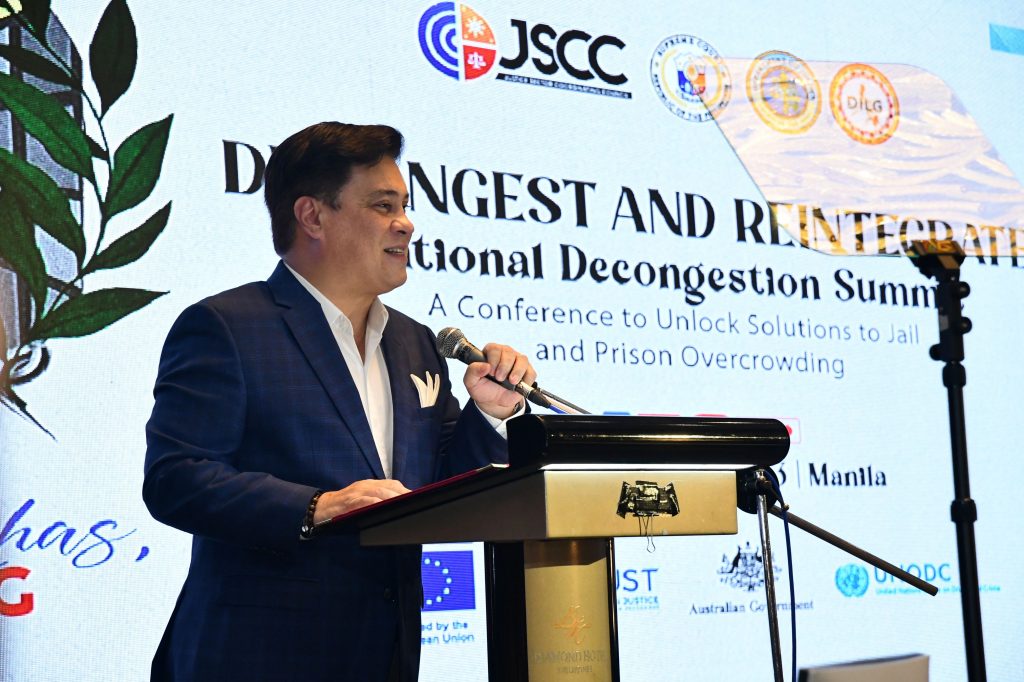
Senate President Juan Miguel Zubiri, speaking at the Justice Sector Coordinating Council’s National Decongestion Summit, says: “This summit is an important step in recognizing a basic but often overlooked truth: that fundamental human rights apply to every Filipino, including our PDLs―no matter the crime, no matter the sentence.” (Courtesy of the Supreme Court Public Information Office)
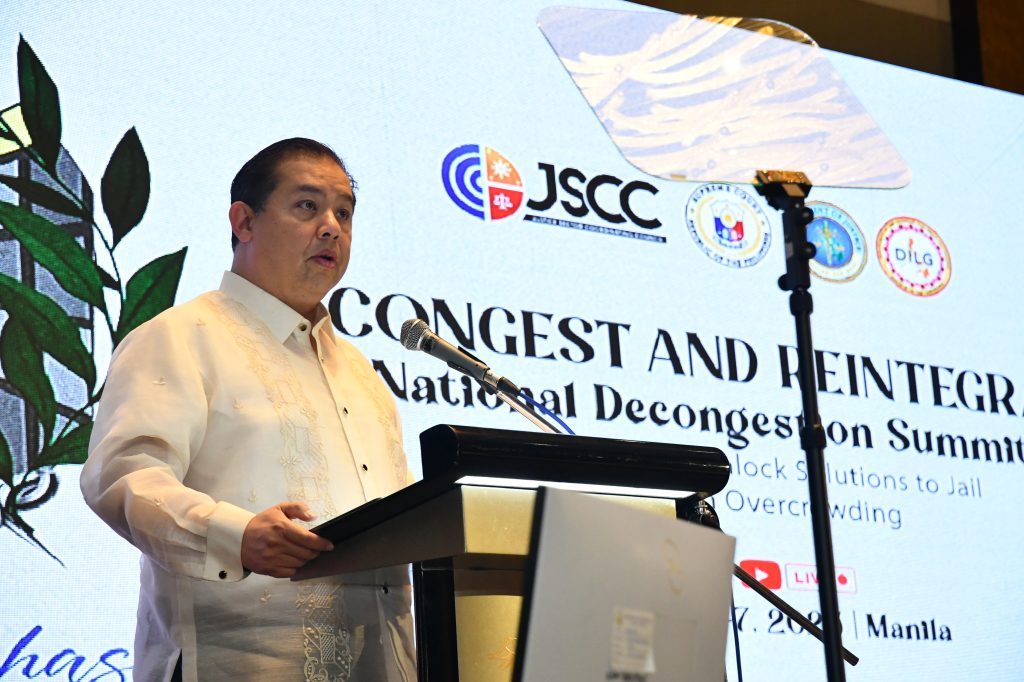
House Speaker Ferdinand Martin Romualdez says that it “is crucial to recognize the dire situation of persons deprived of liberty (PDLs)…This reality calls for our immediate and decisive action,” at the Justice Sector Coordinating Council’s National Decongestion Summit. (Courtesy of the Supreme Court Public Information Office)
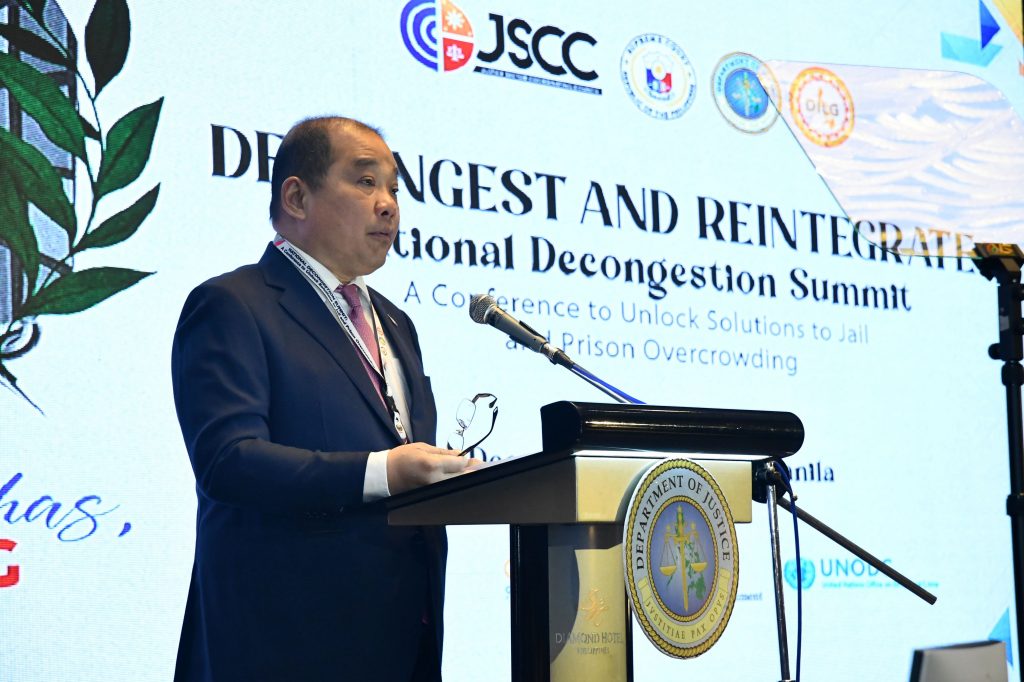
Justice Undersecretary Raul T. Vasquez, on behalf of Justice Secretary Jesus Crispin Remulla, says that: “This conference exemplifies our commitment to transformative change. It will serve as a convergence point for policymakers, corrections practitioners, justice sector professionals, academics, and civil society representatives.” (Courtesy of the Supreme Court Public Information Office)
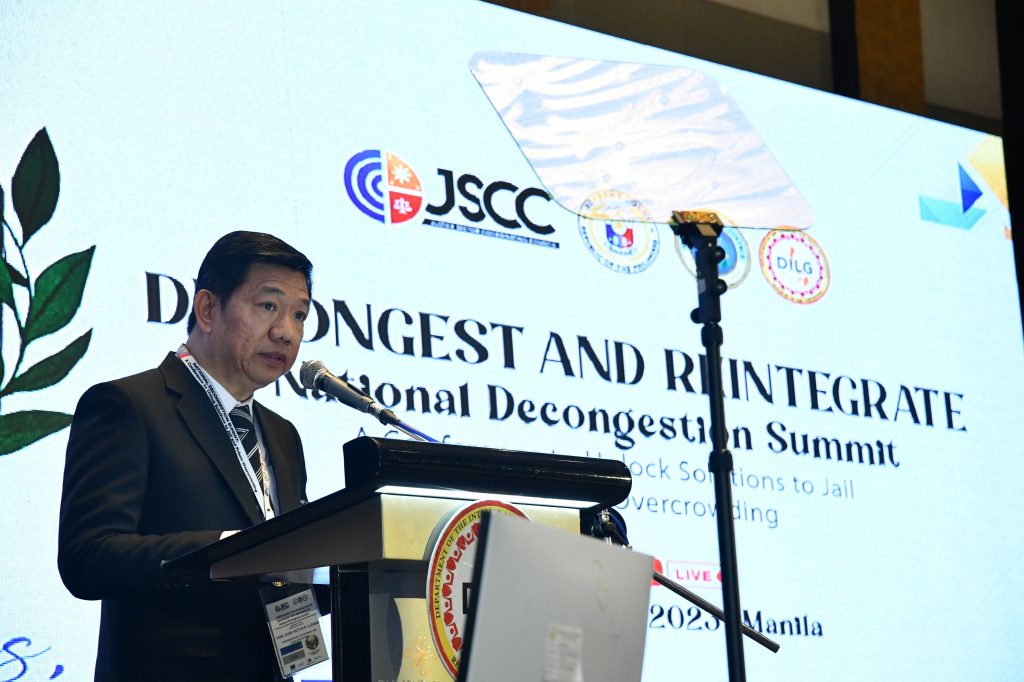
Interior and Local Government Undersecretary Juan Victor R. Llamas, on behalf of Secretary Benjamin Abalos, Jr., expressed optimism that with the support of the legislative branch, “the much needed reforms will be legislated and that adequate funds to support these reforms be given.” (Courtesy of the Supreme Court Public Information Office)
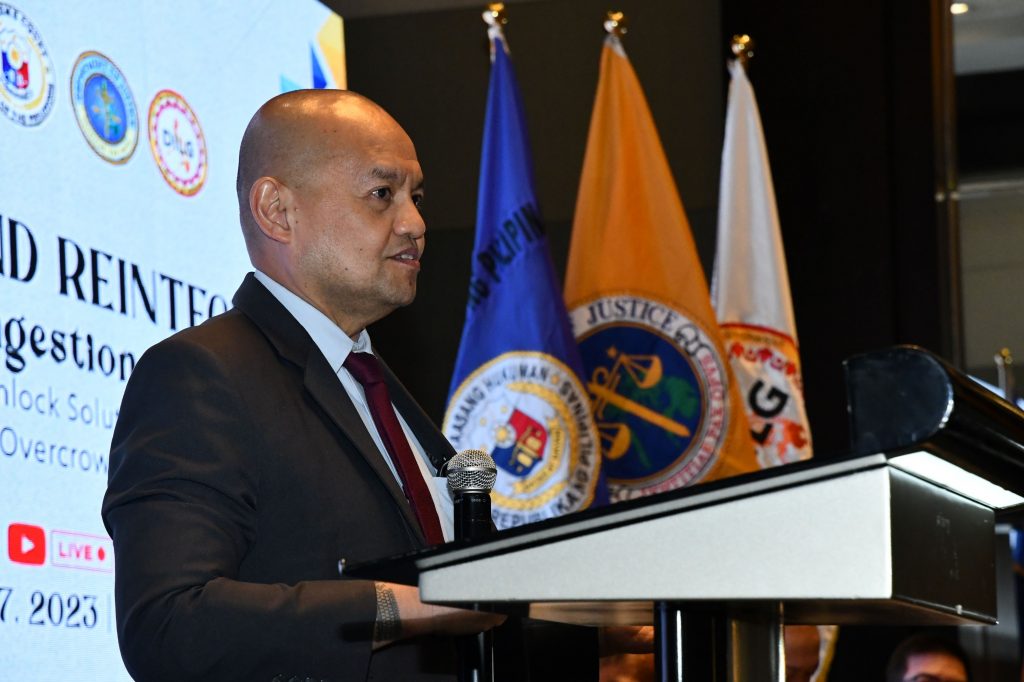
Senior Associate Justice Marvic M. V. F. Leonen is the featured speaker at the National Decongestion Summit’s Workshop 1: Proposed Innovative Judicial Remedies for Decongestion and Monitoring Places of Detention. (Courtesy of the Supreme Court Public Information Office)
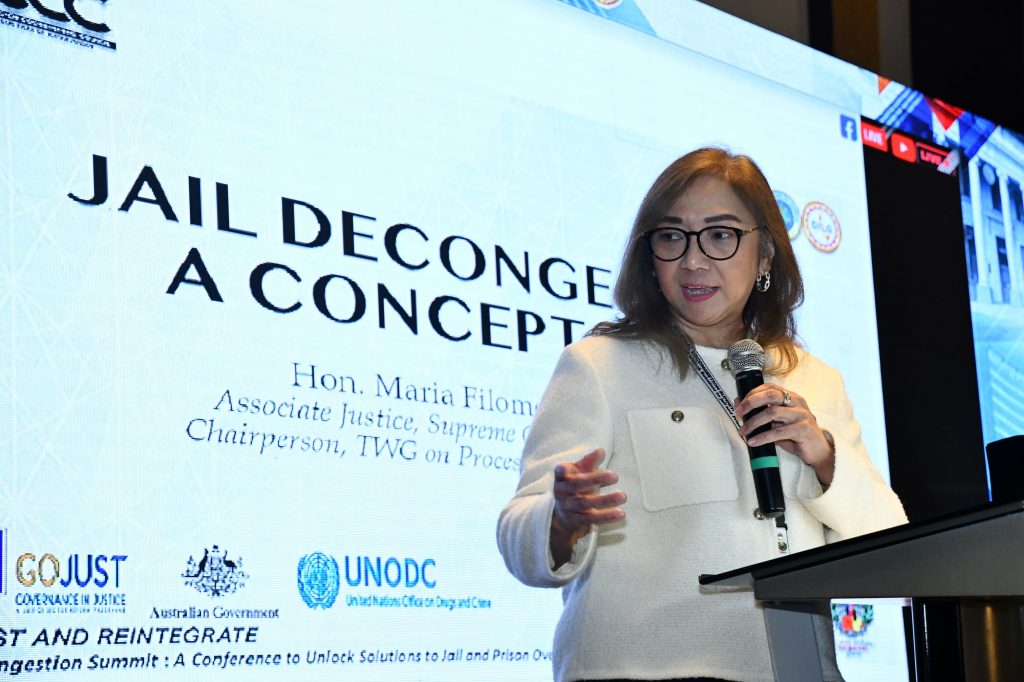
Supreme Court Associate Justice Maria Filomena D. Singh, Chairperson of the JSCC Technical Working Group on Processes and Capacity Building, makes a presentation of the JSCC’s Jail Decongestion Concept Note. (Courtesy of the Supreme Court Public Information Office)
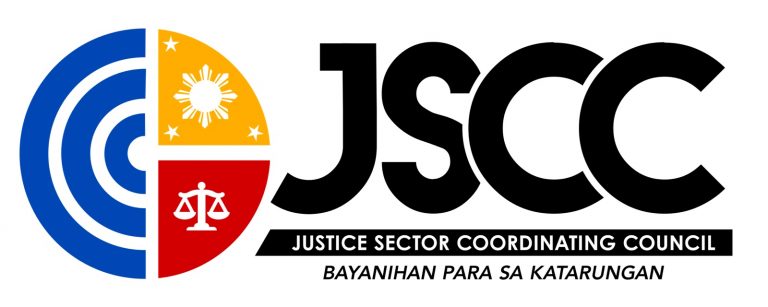
The official logo of the Justice Sector Coordinating Council. (Courtesy of the JSCC)
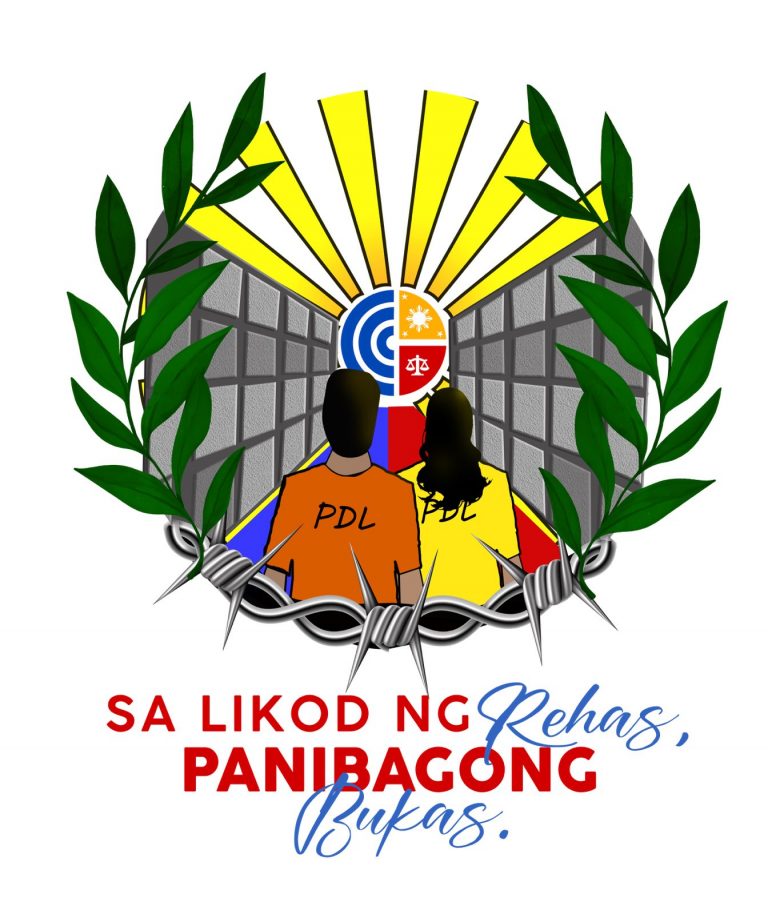
The winning entry to the JSCC Jail Decongestion Summit Logo Contest is based on the art work of Dan Angelo Santos, a PDL at the Aklan District Jail. (Courtesy of the JSCC)












